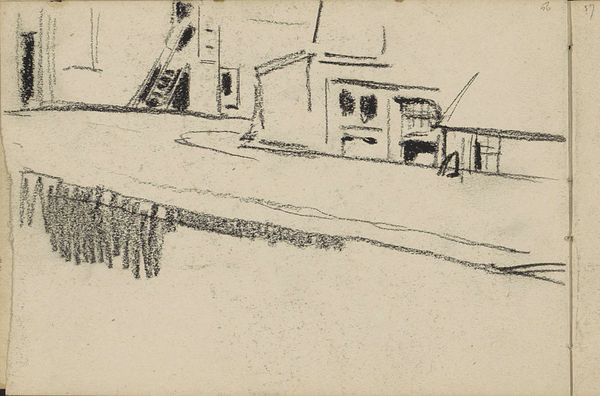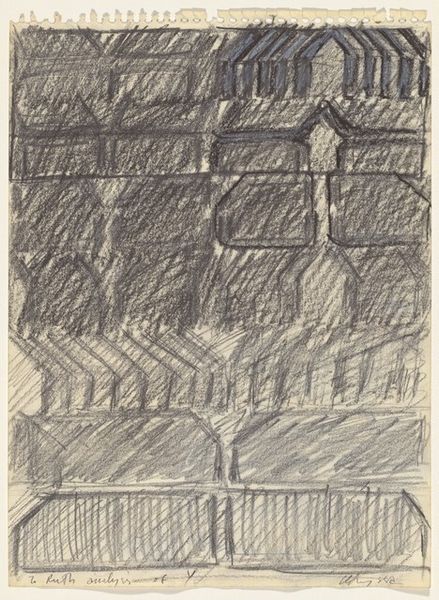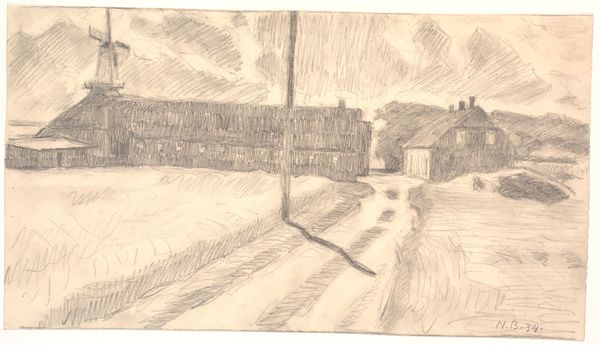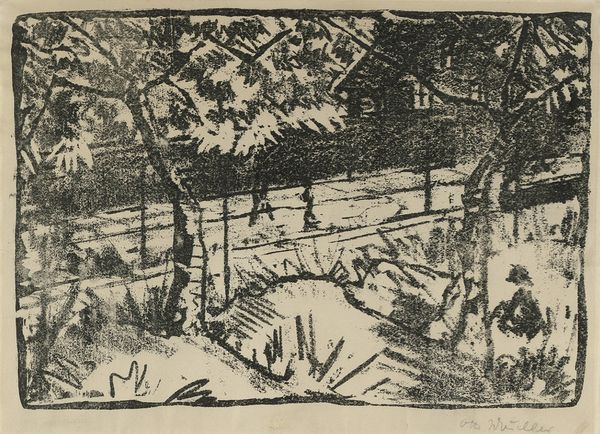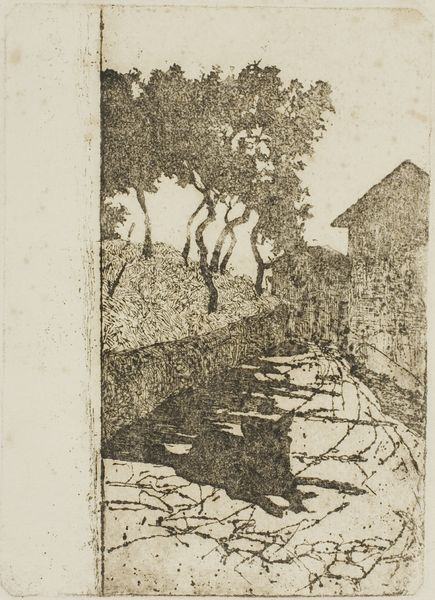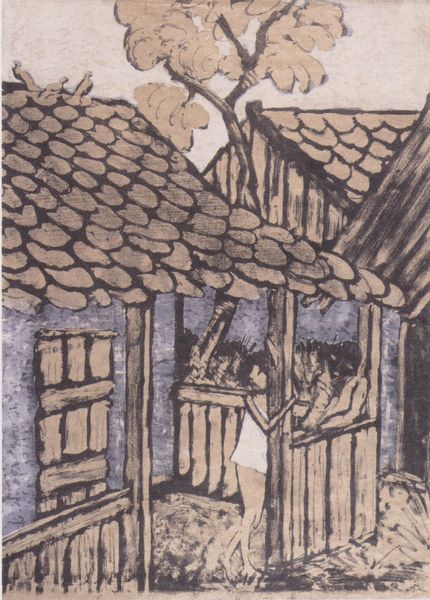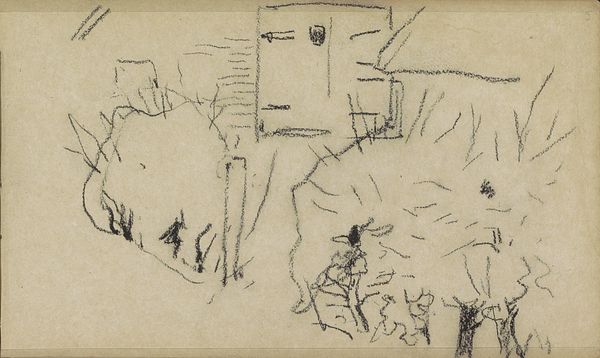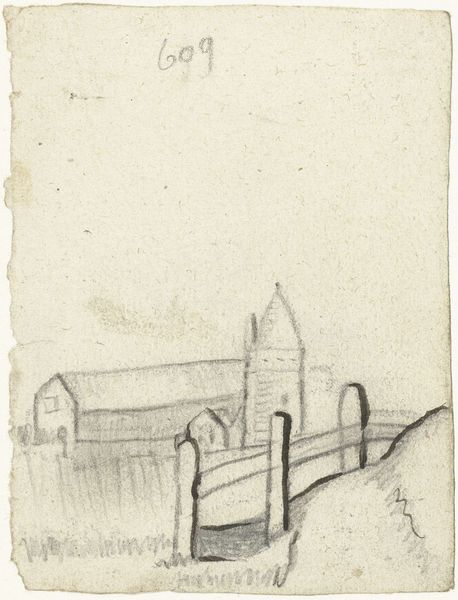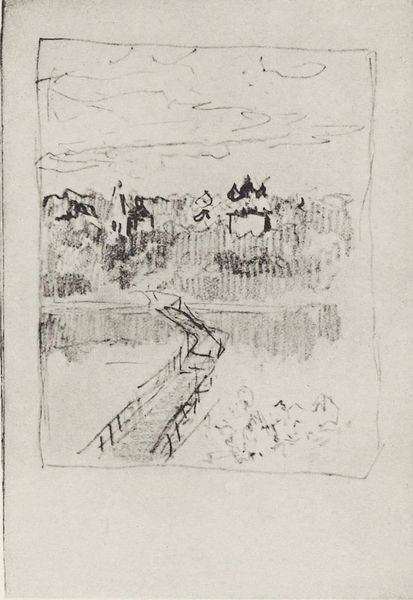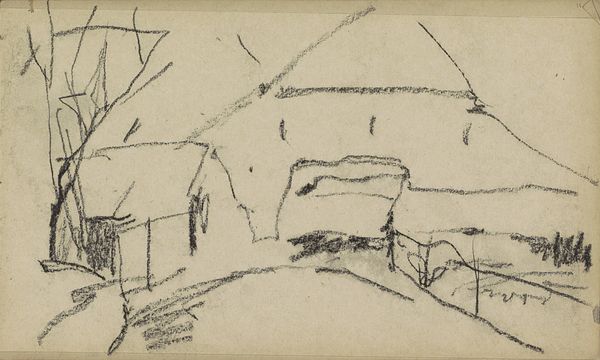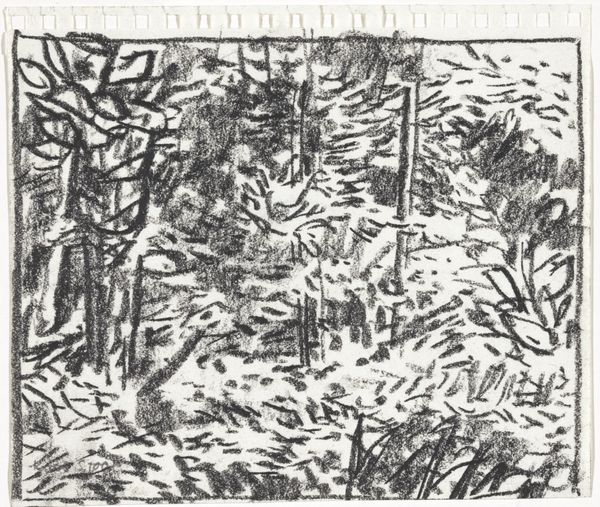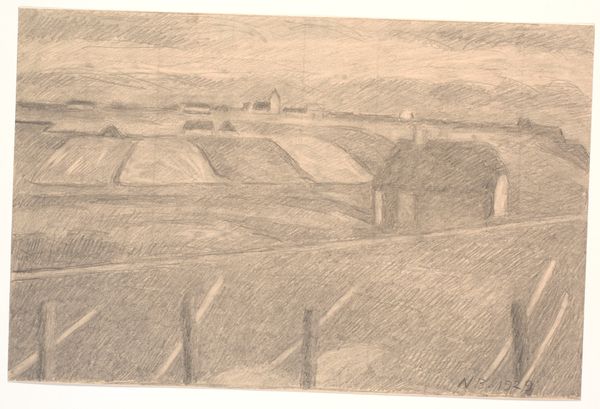
Courtyard with Tree and Houses (Ummauerter Hof mit Baum und Dachern) 1920 - 1925
0:00
0:00
print, woodcut
# print
#
landscape
#
geometric
#
expressionism
#
woodcut
#
cityscape
Copyright: National Gallery of Art: CC0 1.0
Curator: What strikes you first about Otto Mueller's "Courtyard with Tree and Houses," a woodcut likely made between 1920 and 1925? Editor: The texture! The rough, almost primitive cuts into the wood—you can really sense the physical effort involved. And the sheer blockiness of the composition. It feels...sturdy, somehow. Curator: Indeed, the woodcut technique lends itself well to highlighting the materiality of the cityscape. We see it as labor transformed. These aren't smooth, romantic impressions, but blocky representations created via stark choices. Editor: Right. Looking closer, that palm tree—it almost feels like a symbol of resilience against that harsh urban environment. Trees carry significant symbolic weight, evoking ideas of fertility, life, and even paradise. In a courtyard hemmed in by brick and sharp roof lines, the organic presence of nature contrasts nicely. Curator: It also seems Mueller is hinting at both organic growth and the constructed environment in which the tree is caged, drawing our attention to the means of construction. Editor: And it's interesting how the houses aren't just shelters, but looming structures, each repetitive brick etched with its own little story. I wonder if viewers at the time, reeling from the war and massive changes to city infrastructures, connected with that architectural geometry in an immediate way. There’s an intense push and pull here. Curator: Quite possibly. Remember also the Bauhaus was active during these years, promoting radical integration of the arts and craft and valuing simplicity, practicality, and function in the aesthetic. Woodcut, too, underwent a revival in Germany. It was seen as more authentic, somehow. It reflects that era’s values perfectly. Editor: Well, after considering that history of materials, that palm doesn’t necessarily convey simple ideals like fertility, but may reflect instead that nature too, has been affected by humanity’s drive. Curator: Precisely, making it hard to divorce materials, symbolism, and history! Thanks for adding to our consideration here today. Editor: It’s been a fascinating deep dive. This piece leaves one pondering both man’s ingenuity and what’s lost when practicality prevails.
Comments
No comments
Be the first to comment and join the conversation on the ultimate creative platform.

